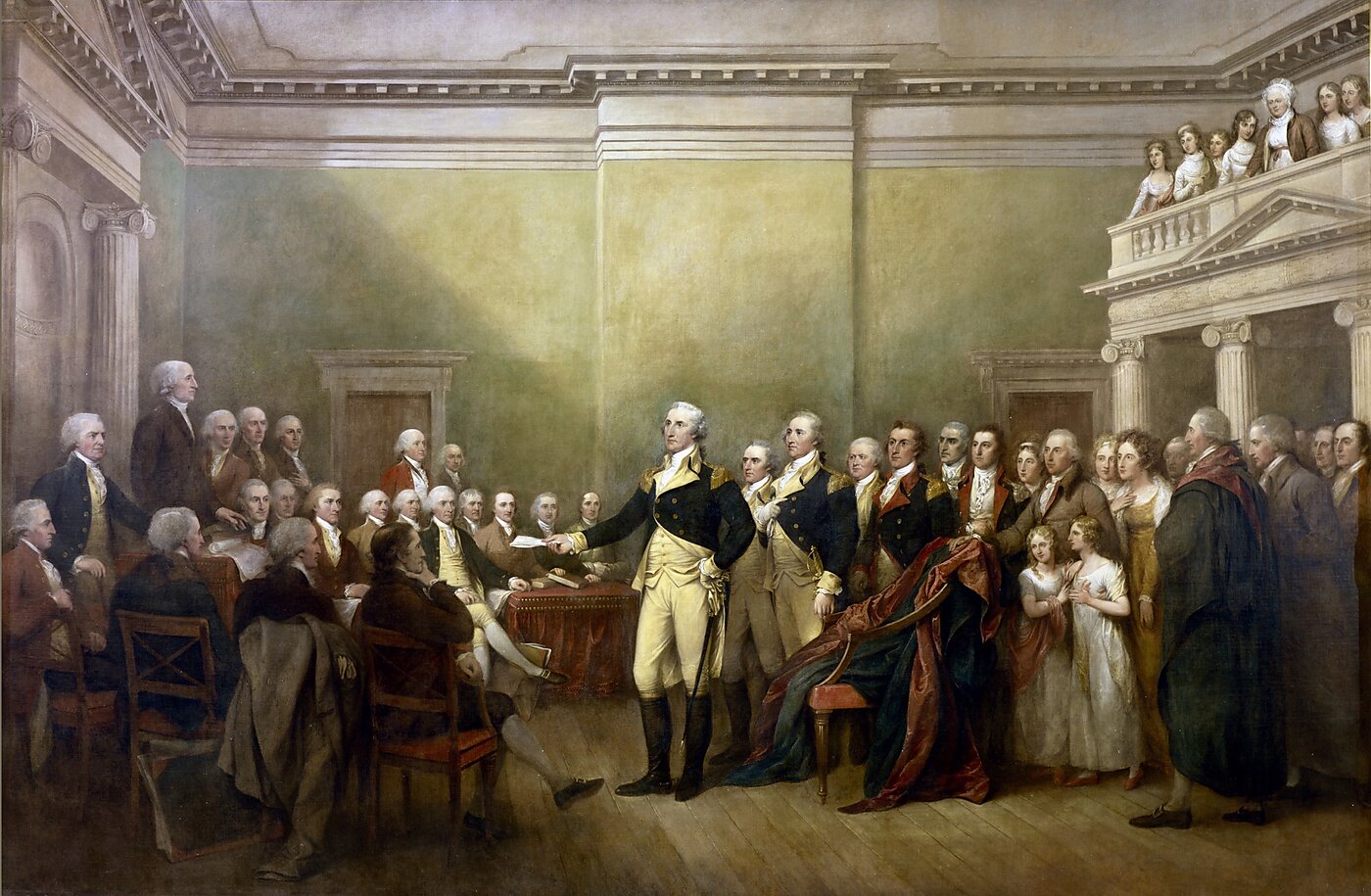On this day in 1783, George Washington appeared before Congress at the statehouse in Annapolis to resign his military commission at the end of the Revolutionary War. In so doing, he created the first of a series of precedents establishing the peaceful, voluntary transfer of power in the United States, along with his decision to not seek a third term as president in 1796 and, four years later, when John Adams became the first president to concede defeat for re-election.
The significance of the moment was not lost at the time. Washington’s former aide-de-camp, John Trumbull, wrote that his resignation “excites the astonishment and admiration of this part of the world. ‘Tis a Conduct so novel, so inconceivable to People, who, far from giving up powers they possess, are willing to convulse the Empire to acquire more.” Trumbull’s monumental painting of the occasion stands today in the rotunda of the Capitol.
On the other side of the Atlantic, even King George III later remarked that Washington’s action would “place him in a light the most distinguished of any man living” and make him “…the greatest character of the age.”
The idea that the highest power in the land would be voluntarily surrendered, subject to the rule of law, was unheard of at the time. Though the Founders had some contemporary examples of quasi-republican government, elective heads of state, and victorious generals after a revolution, these rulers typically held power for life. Figures such as the doge of Venice, the elective kings of the Polish-Lithuanian Commonwealth, and Oliver Cromwell after his victory in the English Civil War reigned until death or until forcibly overthrown. The only analogous history Washington’s contemporaries could find was in Cincinnatus, the Roman general and statesman who had likewise surrendered his military command and returned to civilian life more than two thousand years prior. It was an example he embraced and sought to emulate.
It is fitting that on this anniversary, Congress has adopted a crucial measure to ensure the peaceful transfer of power to a new commander-in-chief every four years. The Electoral Count Reform Act reflects a bipartisan, bicameral consensus to repudiate the lawless, unconstitutional attempts to overturn the results of the 2020 election. It is an exercise in lowercase‑c constitutional lawmaking, remedying the longstanding defects in the procedures for formally confirming who will become the next president.
Along with a broad cross-ideological coalition, my Cato colleagues and I have written extensively about the need to reform the Electoral Count Act of 1887, a muddled and unclear law. This arcane statute, little-noticed for over a century, opened the door to arguments that Congress could usurp the constitutional role of the states and the Electoral College in deciding who should hold the nation’s highest office. The updated law largely reflects our recommendations and scholarly consensus across the political spectrum. It confirms that the Constitution must be followed at each stage of the process, from the proper certification of presidential electors by the states through to the ceremonial role of the vice president during the electoral count on January 6.
Beyond the technical details, reforming the Electoral Count Act represents a commitment to abide by Washington’s example. No man is above the law, no man is indispensable, and no man rules for life.

